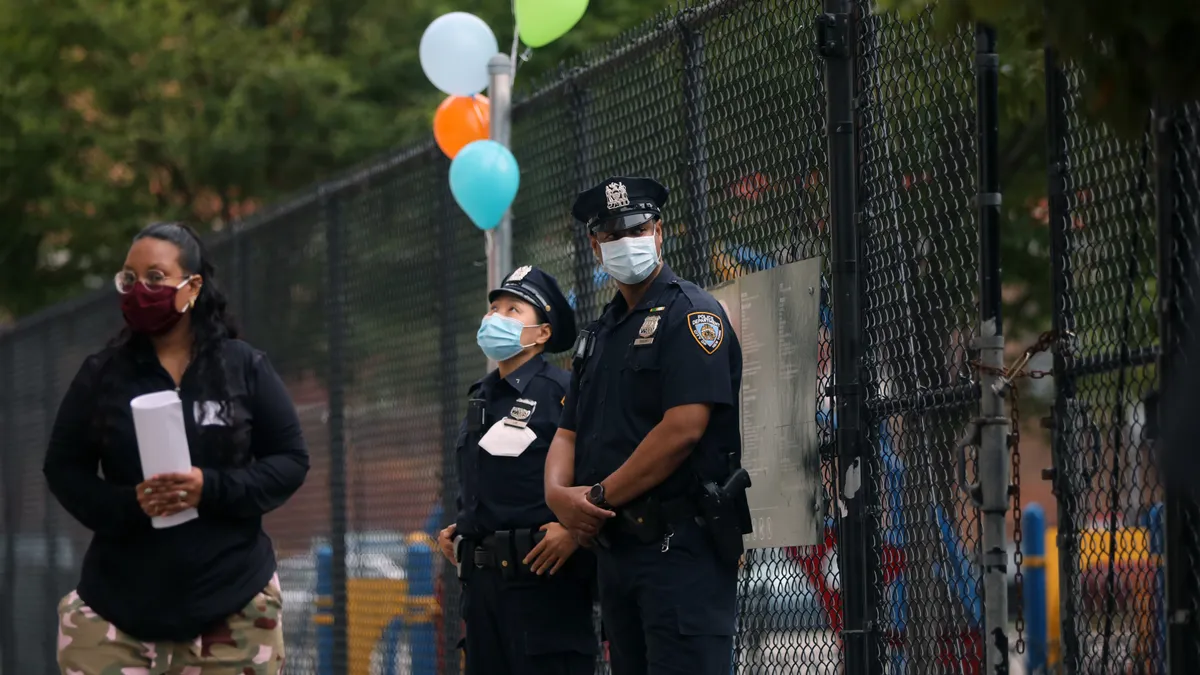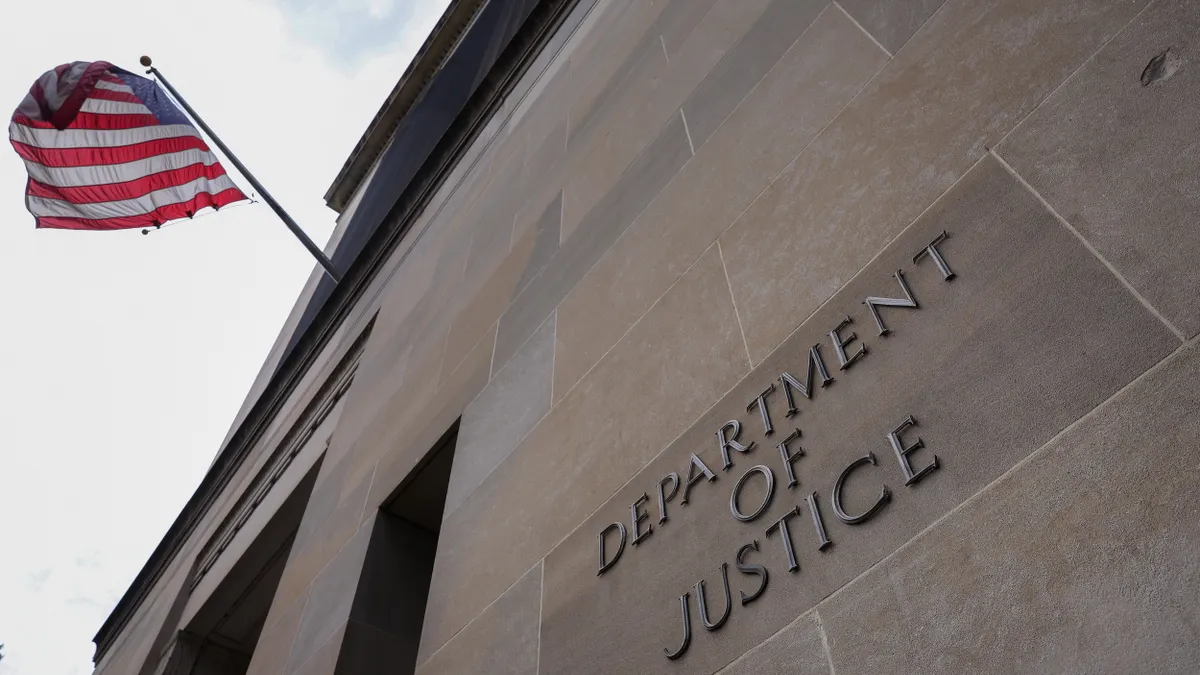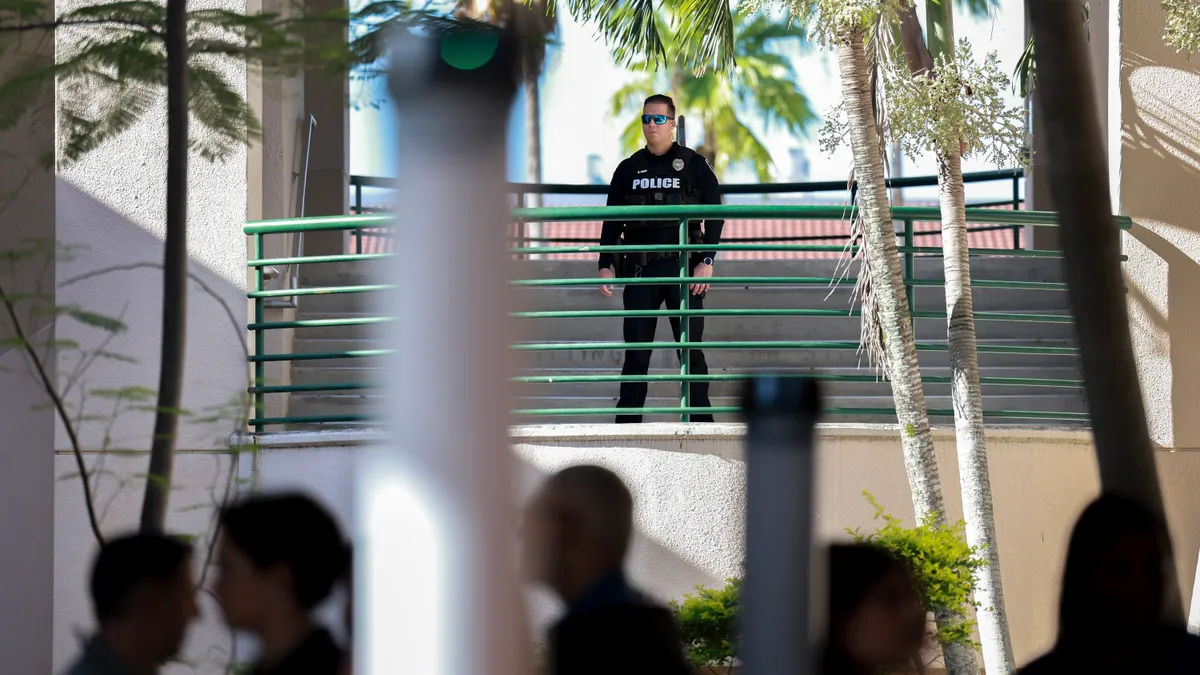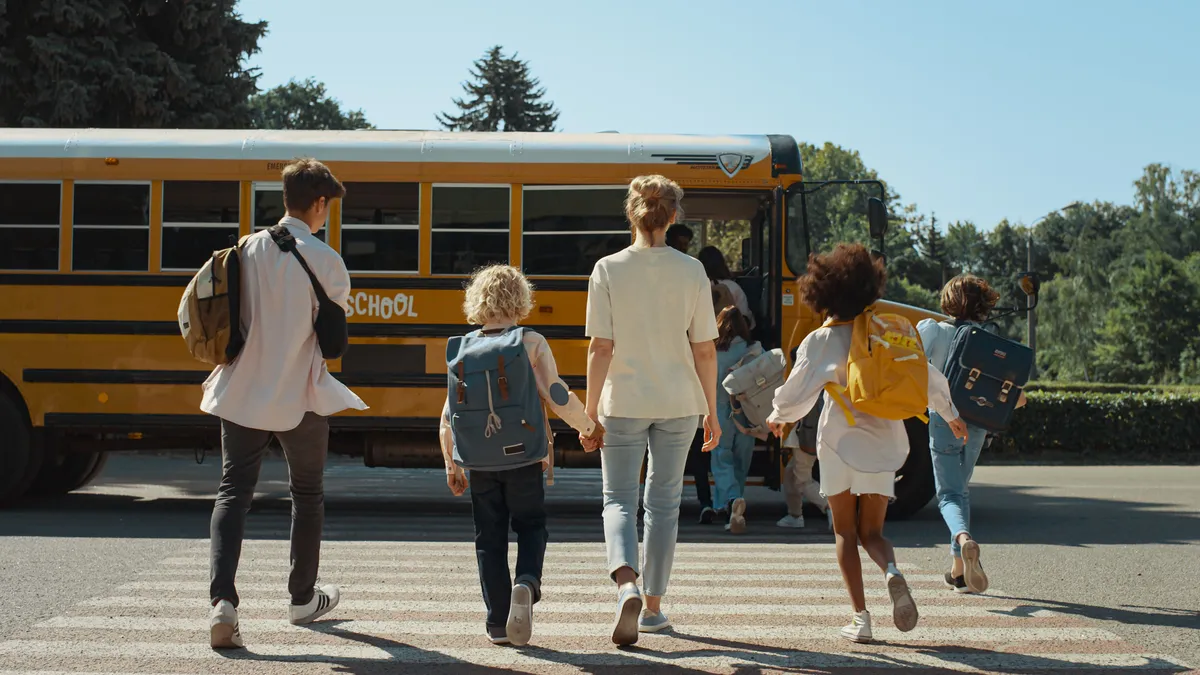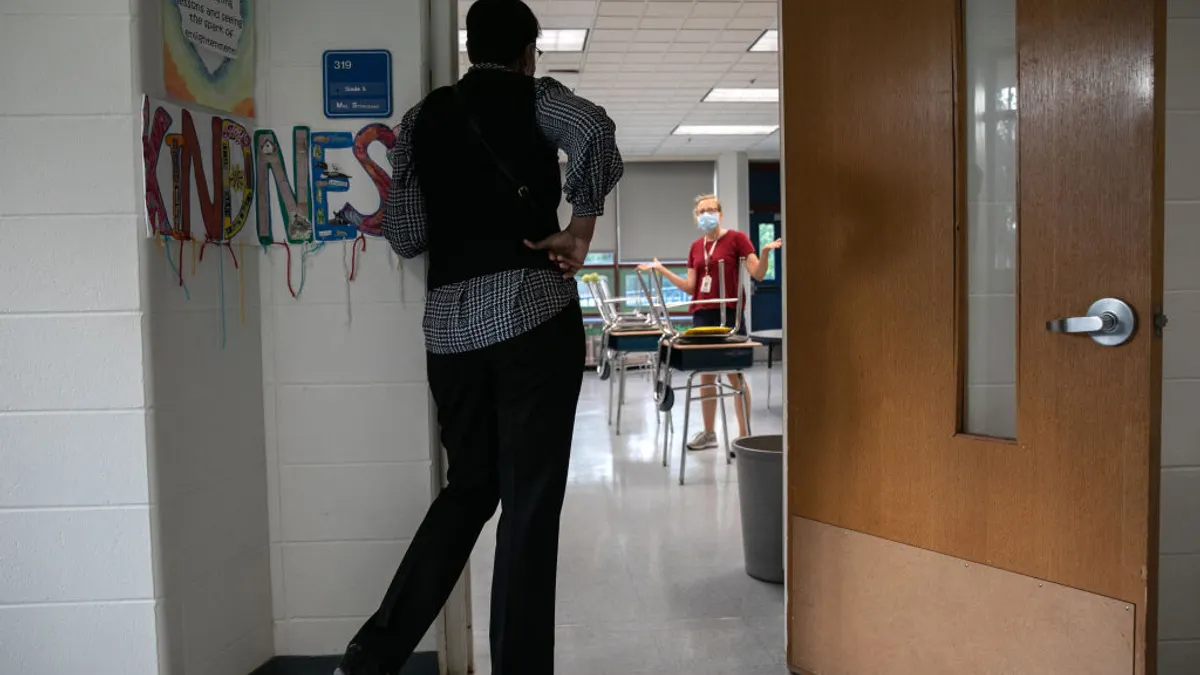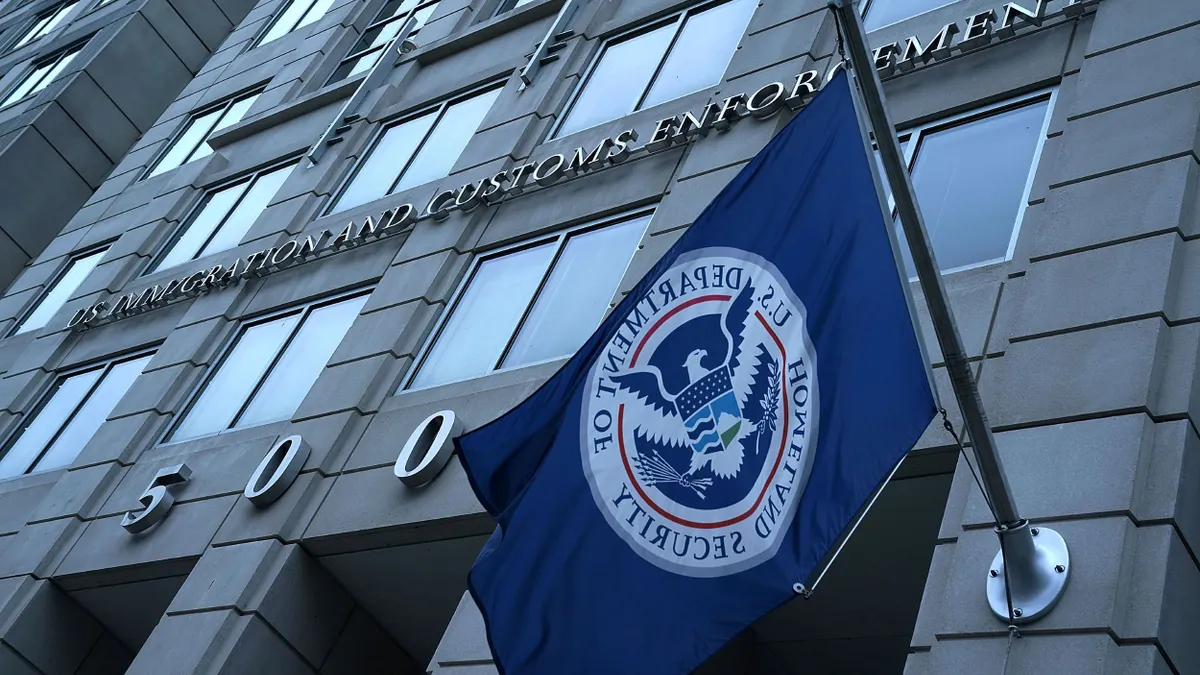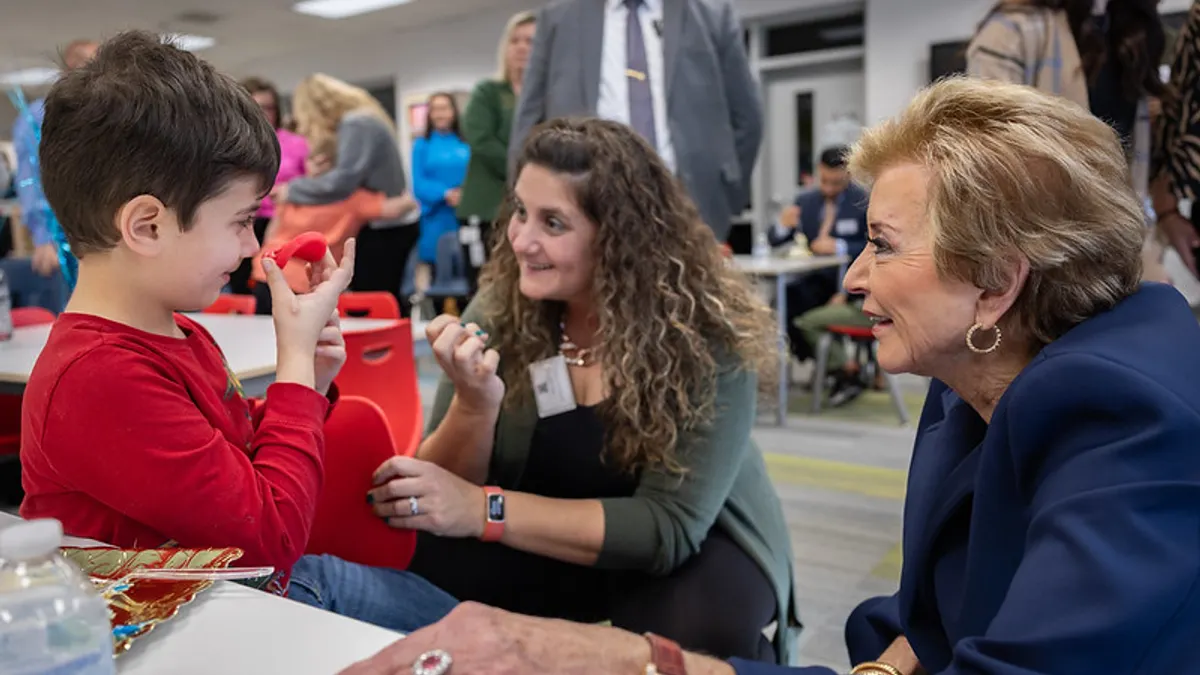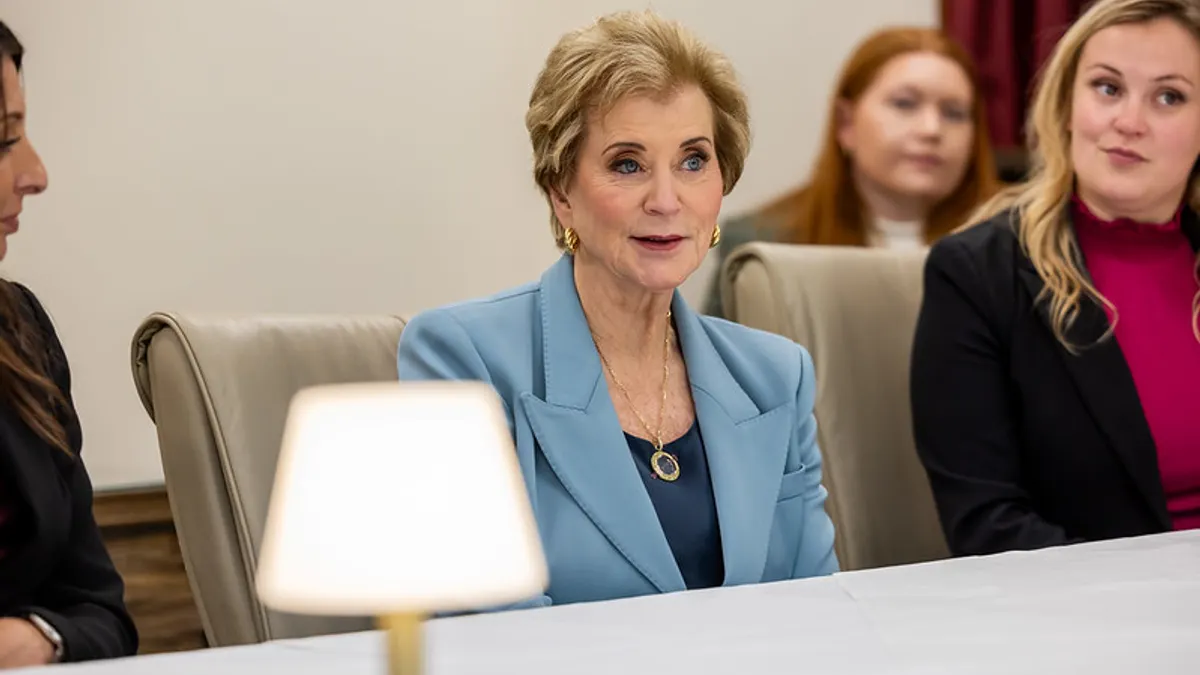Initiatives to dismantle school resource officer programs in the wake of the murder of George Floyd and the killings of other Black Americans at the hands of police have slowed after growing momentum for change last year and Black educators' skepticism around the authenticity of those efforts.
Many school districts have brought SROs back with modifications or put in place similar alternative programs, with Mo Canady, executive director of the National Association of School Resource Officers, describing initial announcements of SRO contract reconsiderations as having been a "knee-jerk" reaction at the time.
Some modifications include using "soft uniforms" — or a polo shirt with police gear still included — in order to make officers seem more approachable, having on-call SROs who are removed from the building but available to help when needed, and removing the arrest powers of SROs in schools.
Overall, the rethinking of approaches to SROs in schools "does not seem to be negatively impacting the majority of our members," Canady said. "I think, for the most part, we're seeing at least circumstantial evidence that most communities are satisfied with their SRO programs."
Rural and suburban districts are among the least likely to consider changes. However, some school districts, especially those in Northern Virginia, are still seeped in SRO debates, Canady added, and commonly caught between community pushback.
In Northern Virginia, districts neighboring one another have made varying or no changes. Alexandria City Public Schools announced earlier this year it would defund its SRO program, with the possibility of reallocating nearly $800,000 in funding to support behavioral and mental health programs. The move was met with parents rallying against the decision.
Arlington County also made the decision to remove police from schools, according to NBC Washington. However, a number of other school systems in the region took different approaches, varying from no changes to adding body cameras and training.
Among the first to sever its contract with the local police department was Minneapolis Public Schools, the local school district in the city where George Floyd was murdered in 2020. However, the district has since garnered public scrutiny after replacing its program with Public Safety Support Specialists, job postings for which require a background in law enforcement, security and violence prevention, or similar experiences.
The district said in a Facebook post it initially "used an existing job description" when releasing the position's requirements.
Some educators, including superintendents, believe school resource officers are critical in maintaining a safe and healthy learning environment. “When trained well and when working in partnership with the schools to be proactive and a support for students, it’s a positive thing,” U.S. Secretary of Education Miguel Cardona said in an interview with the Education Writers Association earlier this year. “I’ve seen models where it works exceptionally well."
Canady believes this is especially important considering what is expected to be a violent school year.
"It really doesn't take a high level of intelligence to figure that it's going to be a rough year from a violence standpoint," Canady said. "You know, we're seeing it play out in our communities across the country. Students are dealing with mental health issues they've never had to face before, and a variety of other circumstances."
According to data from the Center for Homeland Defense and Security, this time of year in 2018 and 2019 saw 18 and 15 shootings, respectively, in or around school buildings. Meanwhile, Sept. 1 through Oct. 1 in 2021 saw a jump to 56 such shootings.
"Those numbers speak for themselves, and it does concern me greatly where we have districts that removed those armed protectors and we're now facing this level of a rise in shootings," Canady said.
However, there is little to no evidence to show SROs are effective in preventing school violence, according to the Chicago Lawyers' Committee for Civil Rights, which states, "A review of 40 years of evaluations of school policing showed no positive impact on school safety outcomes."
Critics of SRO programs also say police presence in schools disproportionately impacts students of color, especially Black students, and feeds the school-to-prison pipeline.
A report published in 2015 based on data from the U.S. Department of Education showed police presence in schools increased the likelihood of student referrals to law enforcement, including for low-level offenses. "Therefore, lawmakers and school officials should consider alternative methods to create safer learning environments," the report concluded.
Black high school students are much less likely than their White peers to feel safe at school in the presence of police, according to a 2020 survey conducted in New Orleans. In the survey, less than half of the high school students overall reported feeling safer in the presence of police.
A similar report about the Los Angeles Unified School District also concluded Black students do not feel safer in the presence of police, finding 67% of Black students perceive SROs to escalate situations, 73% felt they were overly aggressive, and 60% characterized them as rude.
"It has to be done well … Or else it can turn negative," Cardona said about SROs in his interview with EWA. "We don’t need officers to be there looking at offenses with the mentality of looking to try to catch students. That’s not what it should be.”


